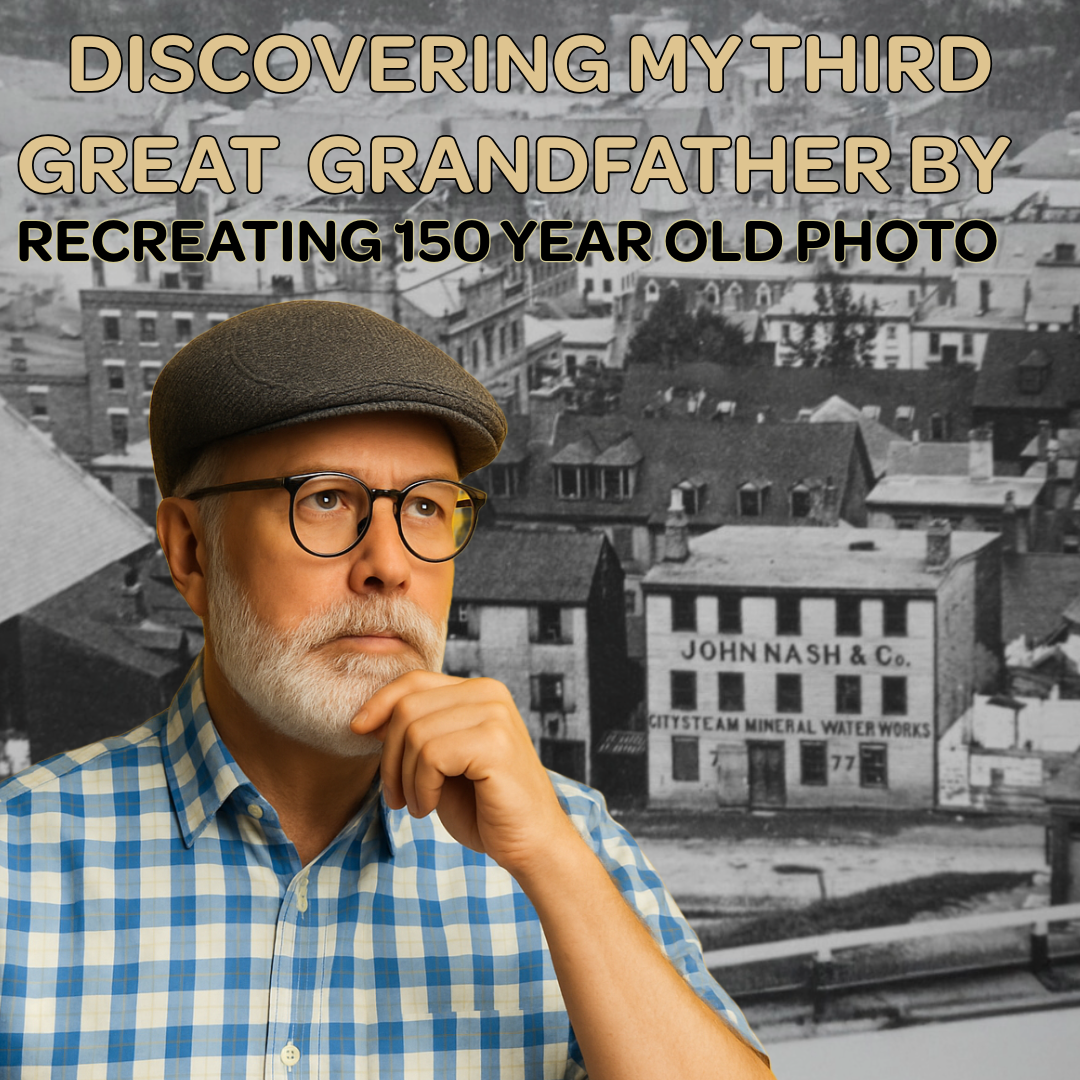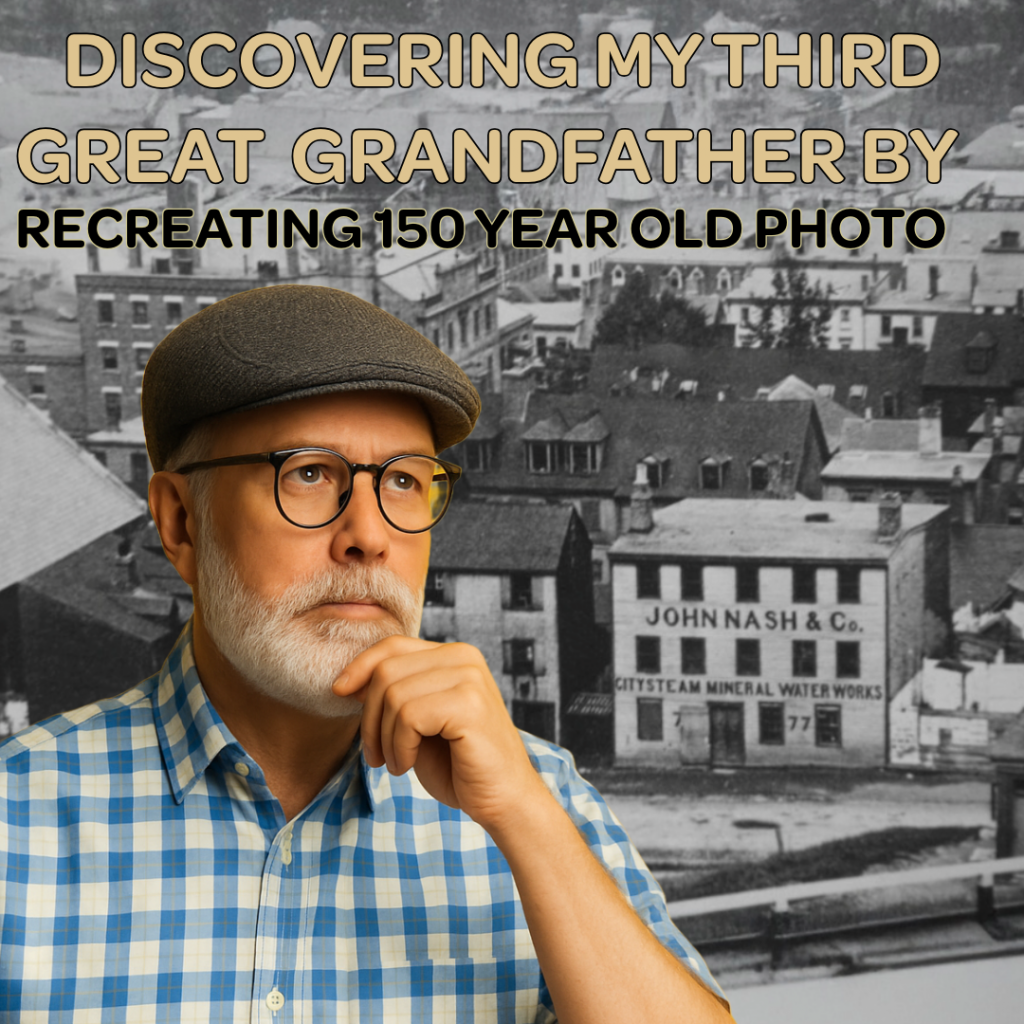
Have you ever held an old family photograph and wondered what it would feel like to stand in that exact spot, looking out at the same view your ancestor once saw? This past summer, I had the incredible opportunity to do exactly that – and let me tell you, it was one of the most emotionally powerful moments of my genealogy journey.
I’m talking about my quest to recreate a 150-year-old photograph of my third great-grandfather’s business in Halifax, Nova Scotia. What started as simple curiosity about an old image turned into a profound connection with John Nash, an Irish immigrant who rose from humble beginnings as a laborer to become a respected Halifax alderman and successful business owner.
The Photo That Started It All
The photograph itself is remarkable – a clear image from the 1870s showing a building with “John Nash” proudly displayed across its facade at 77-79 Brunswick Street. But this wasn’t just any building; this was the culmination of John’s incredible journey from immigrant laborer to “city father.”
When I first saw this photo, I knew it was more than just a historical document. It was a treasure map, a direct link to understanding how someone could transform their life so dramatically in 19th-century Halifax. But more than that, it represented an opportunity to literally walk in my ancestor’s footsteps.
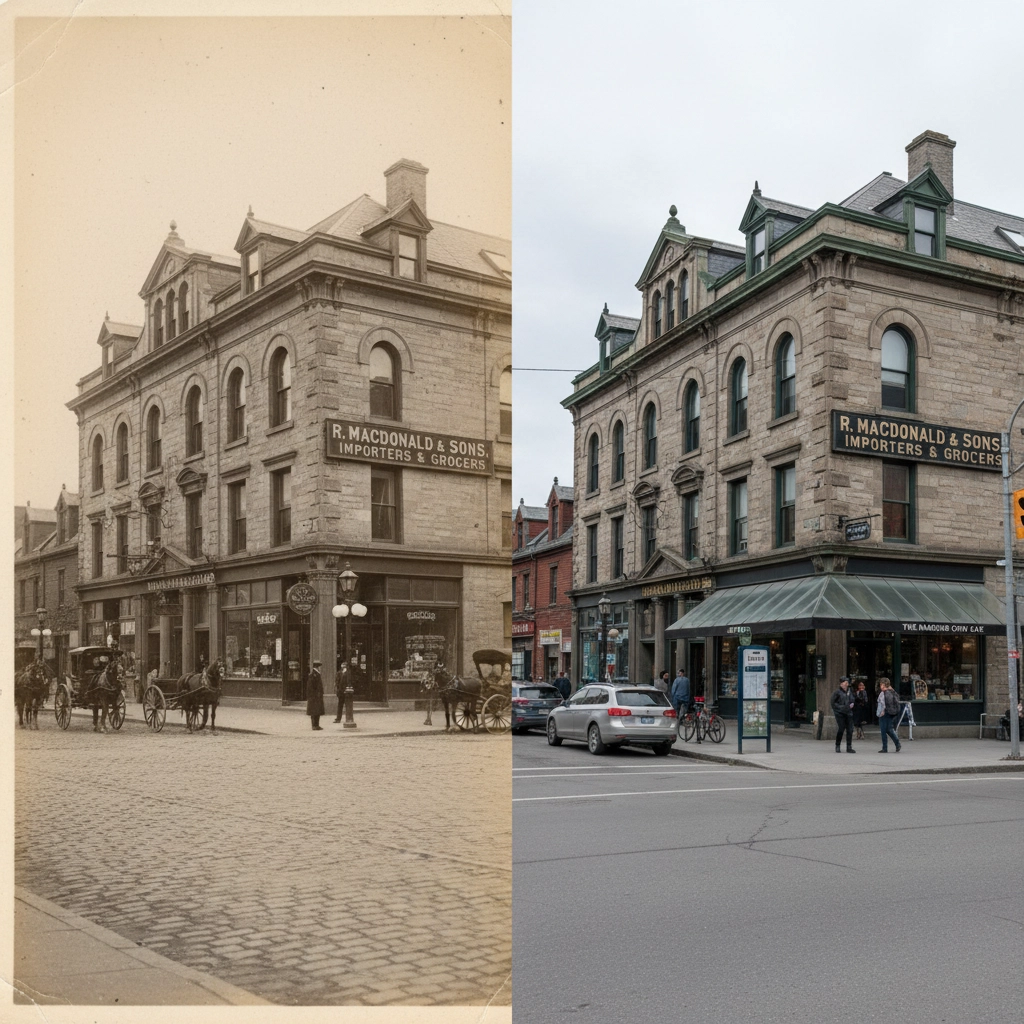
The Challenge of Photo Recreation
Recreating a photograph from 150 years ago isn’t just about finding the right location – it’s detective work that requires patience, research skills, and a bit of creative problem-solving. The Halifax of today looks vastly different from John Nash’s time, but the bones of the city remain remarkably intact.
My process began with careful analysis of the original photograph. I studied every detail: the angle of nearby buildings, the perspective of the street, and most importantly, the unchanging landmarks like the Halifax Citadel clock tower that still dominates the city skyline. These reference points became my anchors in mapping the past to the present.
The real breakthrough came when I discovered tools that help map old street numbers to their modern equivalents. Halifax’s street grid has remained relatively consistent, which meant that with enough research, I could pinpoint exactly where that photographer stood all those years ago.
Standing Where History Happened
The moment I found the spot and positioned myself where the original photographer had stood was absolutely electrifying. Suddenly, this wasn’t just about research or records – it was about occupying the same physical space where my ancestor had built his dreams.
Looking down Brunswick Street from that exact vantage point, I could almost see John Nash walking to his steam-operated bottling plant each morning. I could imagine him standing there proudly, perhaps discussing business with customers or surveying the building that represented everything he’d worked to achieve since arriving from Ireland decades earlier.
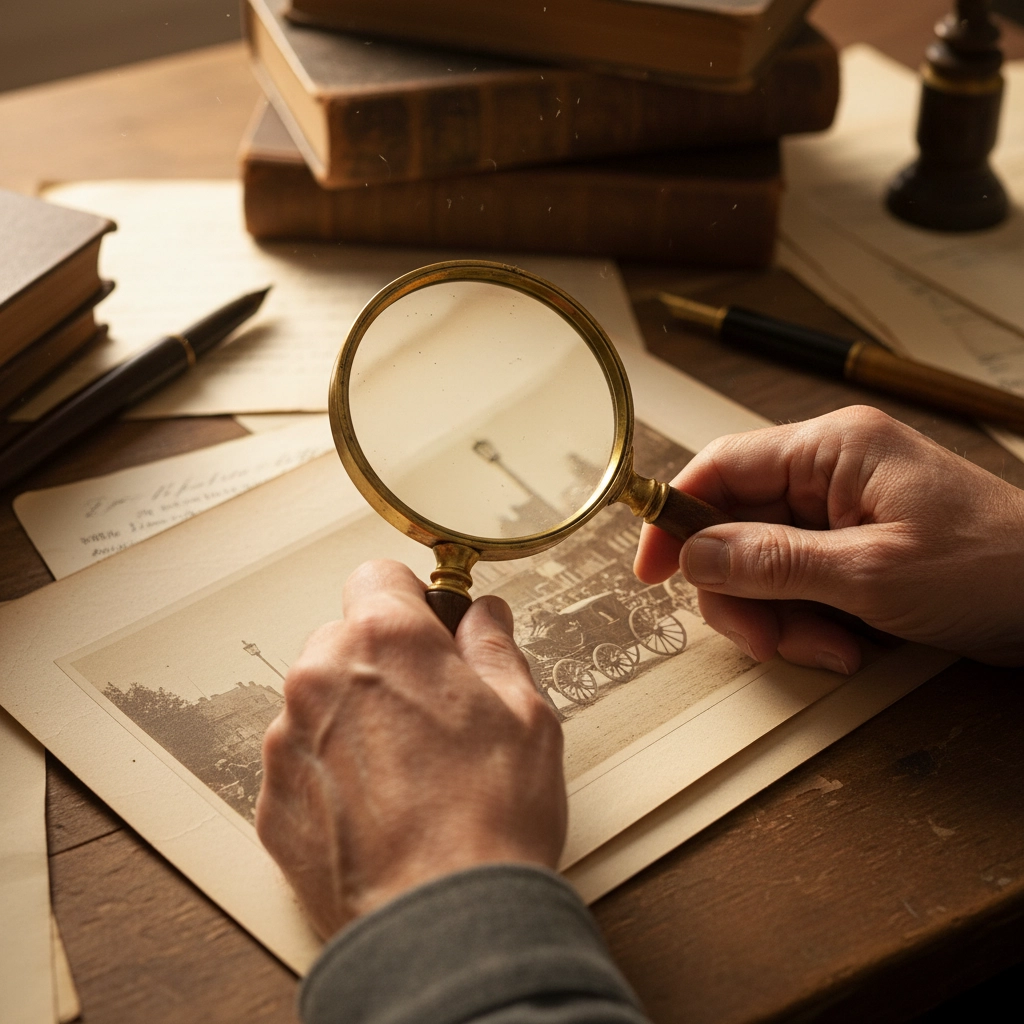
This is what makes photo recreation so powerful in genealogy – it transforms abstract research into visceral, emotional connection. Standing there, John Nash wasn’t just a name in a census record or a date on a death certificate. He was real. He was human. He had walked these same streets, breathed this same air, and looked out at views that I could still see today.
The Technical Side of Time Travel
For those inspired to try photo recreation themselves, here’s what I learned about the process:
Start with landmark analysis. Look for buildings, streetscapes, or geographical features that haven’t changed. In Halifax, the harbor, certain historic buildings, and that iconic clock tower provided crucial reference points.
Use modern mapping tools. Digital maps can help you understand how street numbering has evolved over time. Many cities have online archives that show historical street layouts alongside modern ones.
Consider the photographer’s position. Study the angles in your photo carefully. The height, distance, and perspective all provide clues about exactly where the camera was positioned.
Don’t expect perfection. Cities change, buildings get demolished, and streetscapes evolve. The goal isn’t to recreate an identical photo, but to connect with the place and moment your ancestor experienced.

Beyond the Photo: John Nash’s Remarkable Journey
What made standing in that spot even more meaningful was understanding the full scope of John Nash’s story. This wasn’t just about recreating a photo – it was about honoring an incredible immigrant success story.
John arrived in Halifax as a laborer, starting with nothing but determination and work ethic. By 1838, census records show him as a manual laborer, but by 1859, he was elected as alderman for Ward 2 – a position he would hold multiple times. He became an auctioneer, commission merchant, and eventually a successful business owner with his own steam-operated plant.
The building in that 1870s photograph represented the peak of his achievements. Sadly, John died in 1875, less than two years after opening his factory, but his legacy as someone who transformed himself from immigrant laborer to respected community leader lives on.
Why This Video Deserves Your Attention
I documented this entire journey in a YouTube video that frankly, I believe deserves way more views than it currently has. Not because I’m trying to boost my ego, but because it demonstrates something profound about what genealogy can become when we move beyond just collecting names and dates.
The video shows the entire process – from the initial research that uncovered John’s story, through the detective work of mapping the photograph, to that incredible moment of standing where he once stood. It’s about 7 minutes that capture what can happen when we approach family history as a lived experience rather than just an academic exercise.

The Ripple Effects of Connection
What surprised me most about this experience was how it changed my relationship not just with John Nash, but with genealogy itself. After standing in that spot, every record I found about him felt more significant. Every detail about his family, his business ventures, his role in Halifax politics – it all became more vivid and meaningful.
This is the magic of photo recreation. It takes us beyond the limitations of paper records and digital databases into the realm of spatial memory and emotional connection. When you can stand where your ancestors stood, you’re not just researching their lives – you’re participating in their story.
An Invitation to Halifax Stories
This experience also got me excited about an upcoming project. In October, I’ll be interviewing Craig Morrisey from More You See Genealogy on our podcast. Craig is from Newfoundland and works at The Rooms – Newfoundland’s cultural facility that houses incredible genealogical resources. We’ll be diving deep into Atlantic Canadian genealogy resources and sharing strategies for uncovering those hidden family stories that make our ancestors come alive.
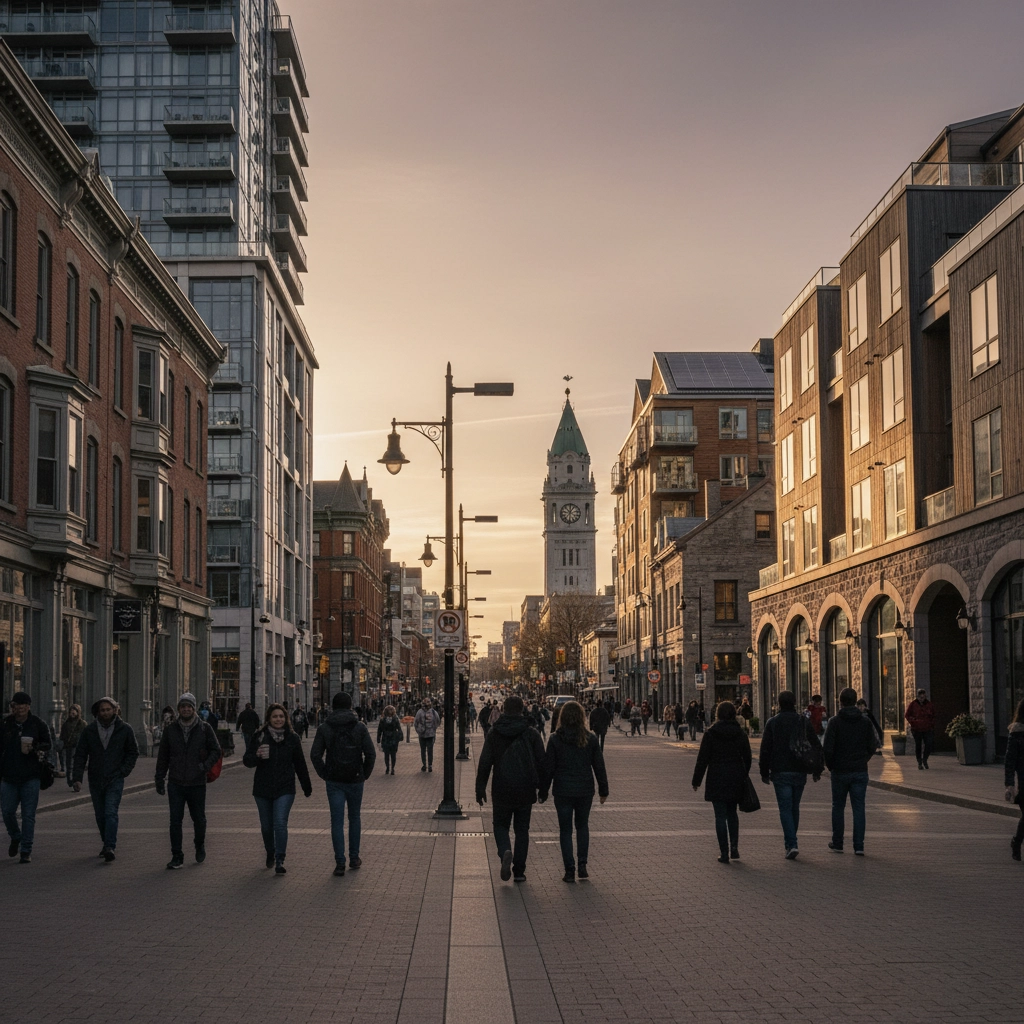
Your Turn to Time Travel
Whether you’re researching Atlantic Canadian roots like John Nash’s story or tracing ancestors anywhere else, I encourage you to think beyond traditional records. Look for photographs, postcards, or even artistic depictions of places your ancestors lived and worked.
The tools for photo recreation are more accessible than ever. Digital archives, mapping software, and even smartphone apps can help you become a genealogical detective, piecing together the physical spaces where your family’s story unfolded.
Don’t underestimate the power of literally walking where your ancestors walked. It’s one thing to read that your great-great-grandfather owned a business; it’s entirely another to stand on the spot where he built his dreams and feel the weight of that history beneath your feet.
Making the Past Present
Photo recreation isn’t just about nostalgia or novelty – it’s about making genealogy a full-sensory experience that connects us more deeply with our family stories. When we can see through our ancestors’ eyes, stand where they stood, and look out at views they once knew, we transform from researchers into participants in an ongoing family narrative.
Every record and every story brings you closer to understanding not just where you came from, but how the courage, determination, and dreams of people like John Nash helped shape the person you are today. Sometimes, all it takes is standing in the right spot to feel that connection across the centuries.
Ready to dive deeper into your Atlantic Canadian roots? Check out the full video of my photo recreation journey, and don’t miss our upcoming October podcast episode featuring Craig Morrisey from The Rooms, where we’ll explore even more resources for uncovering your Maritime family stories.
